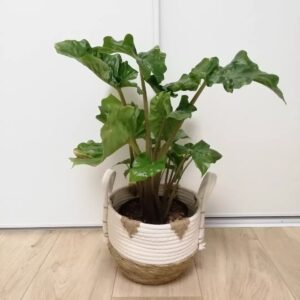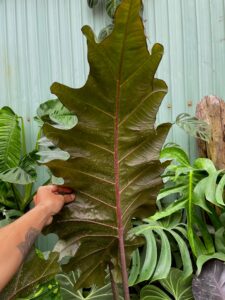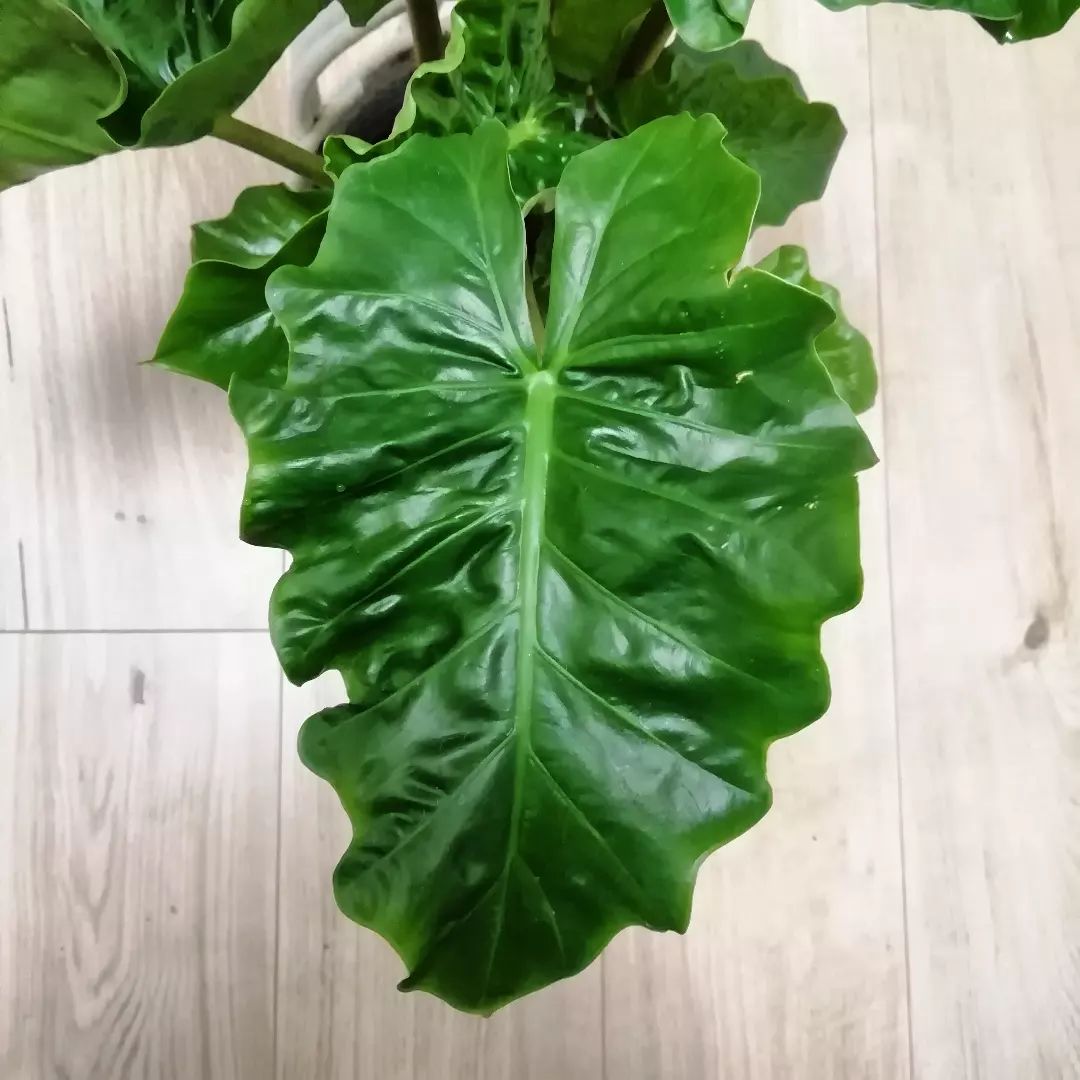Basic Information
This guide is your ultimate resource for caring for your Alocasia Portodora, a majestic indoor plant known for its striking foliage. Find tips on watering, lighting, fertilizing, and pest control to ensure your plant becomes an eye-catching addition to your indoor greenery. Follow these guidelines and watch your Alocasia flourish into a healthy and beautiful plant!



Light
The Alocasia Stingray flourishes in bright, indirect sunlight. Ideal placement includes east or west-facing windows, where it can enjoy gentle morning or late afternoon sun. Direct sunlight should be avoided, as it can scorch the leaves. If your space lacks natural light, consider supplementing it with artificial light sources. Remember, adequate lighting is crucial for maintaining the plant’s vibrant foliage.
Water
When it comes to watering, the Alocasia Portodora prefers consistency. The soil should be moist but not soggy. Water it when the top half of the soil dries out, which usually takes about a week in average home environments. Be cautious, as overwatering can lead to root rot, while under-watering might cause the leaves to droop.
Tip: When Portodora grows new leaves, it’s essential to water him more frequently as he will use more energy.
Soil
The right soil mix is essential for Alocasia Portodora. A well-draining, nutrient-rich potting mix works best. Incorporate ingredients like perlite or orchid bark to improve drainage and aeration. This plant enjoys a balance of moisture retention and drainage to prevent waterlogging.
Temperature
Alocasia Portodora prefers warm, stable temperatures, ideally between 18°C to 25°C (64°F to 77°F). Protect it from sudden temperature drops and keep it away from cold drafts and air conditioning vents. Consistent warmth is key to its healthy growth.
Humidity
High humidity levels mimic Alocasia Portodora’s native tropical environment. Aim for a humidity level above 60%. Utilize a humidifier, mist the plant regularly, or place it on a pebble tray with water to increase the ambient humidity, especially during dry months.
Fertilizer
Feed Alocasia Portodora with a balanced, water-soluble fertilizer every month during the growing season (spring and summer). Reduce feeding in fall and winter as the plant’s growth slows. Over-fertilizing can damage the plant, so adhere to the recommended doses.
Tip: Hold off on adding fertilizers to your Alocasia Portodora if it’s not doing well. First, check for signs of distress, like lack of sunlight or improper watering. Avoid applying fertilizer near the roots
Growth Rate
Alocasia Portodora is a fast-growing plant under optimal conditions. It can reach a significant size, making it a dramatic feature in any indoor garden. Regular care and meeting its light, water, and nutrient needs will ensure vigorous growth.
Pet Safety
Be cautious, as Alocasia Portodora is toxic to pets if ingested. It can cause irritation and gastrointestinal upset in animals. Keep it out of reach of pets to prevent any accidental ingestion.
Grow in Semi-Hydro
- Alocasia plants excel in Semi-hydroponics (LECA/Pon) due to their natural inclination for root growth and humidity.
- Successfully transitioning Alocasia to Semi-hydroponics is enhanced with a Nutrient Stagnant Wicking (NSW) setup.
- Alocasia roots adapt seamlessly to the water in LECA/Pon, with quick resolution of any root hair issues in NSW setups.
- Fertilizer includes a nutrient mix concentration of approximately 800-1000ppm.
- These plants are versatile in different temperature and humidity settings, thriving in controlled environments.
- Long-term care involves maintaining a constant water reservoir and performing occasional system flushes for sustained growth.
Tips
- Rotate the plant periodically to ensure even growth.
- Protect from direct sunlight to avoid leaf burn.
- Regularly inspect for pests and treat them promptly if needed.
- Prune yellowing or damaged leaves to maintain health and appearance.
- Repot every two years or when the plant outgrows its pot.
Embrace the Enjoy Alocasia Portodora’s beauty in your home with this guide.
Happy planting! 🌱


